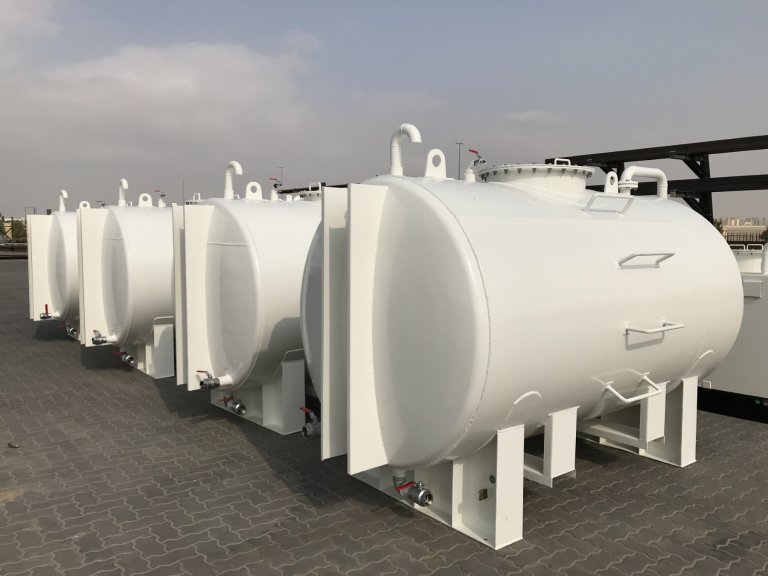
Introduction to Double-Walled Underground Storage Tanks
Double walled underground storage tanks (USTs) are essential components in the safe storage of hazardous and non-hazardous liquids. They provide an added layer of security against leaks, contamination, and environmental hazards. These tanks are commonly used in petroleum storage, chemical storage, and wastewater containment, ensuring long-term reliability and regulatory compliance.
Key Features of Double Walled Underground Storage Tanks
1. Secondary Containment for Leak Prevention
The double-walled design consists of a primary inner tank and a secondary outer tank, creating a containment system that prevents leaks from contaminating soil and groundwater. The space between the walls, known as the interstitial space, is monitored for any potential breaches.
2. Durable Construction Materials
Double-walled USTs are manufactured using high-strength materials such as:
- Fiberglass-reinforced plastic (FRP) – Offers corrosion resistance and longevity.
- Steel with protective coatings – Provides structural strength and prevents rusting.
- Composite materials – Enhance durability and chemical resistance.
3. Advanced Leak Detection Systems
Modern underground storage tanks are equipped with leak detection systems such as:
- Interstitial monitoring sensors
- Automatic tank gauging (ATG)
- Vacuum or pressure monitoring These systems ensure early leak detection, minimizing environmental risks.
Advantages of Using Double Walled Underground Storage Tanks
1. Environmental Protection
One of the most significant benefits of double-walled USTs is the prevention of soil and groundwater contamination. The secondary containment layer provides an extra barrier against hazardous leaks.
2. Regulatory Compliance
These tanks are designed to meet stringent environmental and safety regulations, including:
- EPA (Environmental Protection Agency) standards
- NFPA (National Fire Protection Association) guidelines
- UL (Underwriters Laboratories) certifications
3. Long-Term Cost Savings
Although the initial cost of double-walled USTs may be higher than single-walled tanks, they offer long-term savings through reduced maintenance costs, lower risk of environmental fines, and extended lifespan.
4. Versatility in Applications
Double-walled underground tanks are used across various industries, including:
- Fuel storage – Gas stations, fleet fueling stations, and aviation fuel depots.
- Chemical storage – Industrial facilities handling hazardous chemicals.
- Wastewater management – Treatment plants and industrial waste containment.
Installation and Maintenance Best Practices
1. Proper Site Selection and Preparation
Selecting an appropriate location is critical to the safe installation of USTs. Factors to consider include soil stability, water table levels, and regulatory zoning requirements. The excavation site must be carefully prepared to accommodate the tank’s dimensions and ensure a stable foundation.
2. Professional Installation
Installation should be carried out by certified professionals who follow industry standards. The process involves:
- Proper anchoring to prevent buoyancy issues.
- Correct piping connections to minimize leaks.
- Backfilling with appropriate materials to support the tank structure.
3. Routine Inspections and Maintenance
Regular inspections and maintenance are essential for the longevity of double-walled USTs. Key maintenance activities include:
- Checking for leaks using interstitial monitoring
- Inspecting the integrity of coatings and protective linings
- Testing sensors and leak detection systems
Comparing Double Walled USTs vs. Single Walled USTs
1. Safety and Environmental Impact
- Double-walled tanks provide superior protection against leaks, reducing the risk of environmental damage.
- Single-walled tanks lack secondary containment, making them more susceptible to contamination.
2. Compliance with Regulations
- Many regions have banned single-walled USTs due to stricter environmental laws.
- Double-walled USTs meet modern regulatory standards, making them the preferred choice for compliance.
3. Cost and Longevity
- Initial cost: Double-walled tanks may cost more upfront but offer long-term savings by preventing costly environmental damage and fines.
- Durability: Double-walled tanks have a longer lifespan, reducing the need for frequent replacements.
Choosing the Right Double Walled Underground Storage Tank
1. Capacity and Dimensions
Selecting the appropriate tank size depends on storage needs and space availability. Standard capacities range from 1,000 gallons to over 50,000 gallons, catering to different industrial and commercial requirements.
2. Material Compatibility
Ensure that the tank material is suitable for the stored substance. For example:
- Fiberglass tanks are ideal for corrosive chemicals.
- Steel tanks work well for petroleum products.
3. Compliance Certification
When purchasing a double-walled UST, check for compliance certifications from UL, EPA, and other regulatory agencies to ensure safety and quality standards are met.
Conclusion
Double-walled underground storage tanks are a critical investment for industries requiring safe, durable, and environmentally compliant storage solutions. Their secondary containment, advanced leak detection, and regulatory compliance make them the preferred choice over single-walled alternatives. By following proper installation and maintenance practices, businesses can ensure long-term reliability and safety.




Leave a Reply